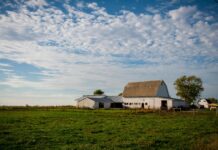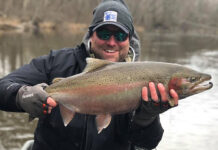I made a new friend last weekend at the annual Berkeley Springs (W.Va.) Fall Birding Festival. Marcy Heacker and I spoke to the group on Saturday evening.
Marcy works at the Smithsonian Institution’s Division of Birds where she identifies feather fragments as a forensic ornithologist at the Feather Identification Laboratory. Usually her work involves bird strikes that bring airplanes down, but Heacker may be called upon anytime a mystery bird needs to be identified.
Heacker and three colleagues work in a lab where they have access to 600,000 bird specimens and 20,000 feather reference slides.
Feathers
Trained by the women who invented this science, Roxie Laybourne, Heacker spends much of her time peering through a microscope identifying birds by the microstructure of their feathers. In just a few minutes, for example, she taught me that galliform (quail, turkeys, pheasants, and grouse) feathers can be recognized by faint lines that run along the shaft of flight feathers and that the underside of the shaft of galliform flight feather are marked by a groove.
In cross section, these feather shafts are u-shaped.
“Next time you find a turkey feather in the woods, check it out,” Heacker said.
Flight down. One of the most famous and recent planes taken down by a bird strike was U.S. Airways Flight 1549 on Jan. 15, 2009. After taking off from New York’s LaGuardia Airport, Flight 1549 collided with a flock of Canada geese at 2,900 feet.
Though the collision disabled both engines, the jet landed safely in the Hudson River, and all 155 people on board survived.
The Feather ID Lab used microscopic examination and sophisticated molecular techniques to determine that the birds that caused the crash were migratory Canada geese from Labrador as opposed to nonmigratory, residential birds.
This is important because managing migratory geese requires different strategies than managing residential birds.
Threat
Bird-airplane strikes pose a serious threat to human passengers and military and commercial aircraft. Last year, military and civilian aircraft attributed more than $600 million in damages to bird collisions.
By identifying the birds that most commonly strike aircraft, biologists may some day be able to predict and avoid devastating bird-plane collisions.
Mystery
Heacker also described one of the lab’s most puzzling cases. It sounds like a TV script from one of the popular police procedurals. The pilot’s report said an impact occurred at 1,500 feet. DNA analysis of the soft tissue left behind on the engine took longer than normal and when the technician turned in the report, it listed the victim as a deer.
Heacker immediately tracked down the pilot, and he confirmed the information he submitted. He was certain of the altitude of the collision. So the lab went back to work and solved the puzzle.
It turned out that deer DNA was not the only type left behind on the engine. There was also black vulture DNA. Apparently, the unlucky victim was a vulture that had recently dined on a dead deer.
In the same manner, fish DNA turn up after collisions with fish-eating birds, and frog DNA has been co-mingled with great blue heron DNA.
Sometimes something that seems impossible has an entirely logical explanation.
When I asked Heacker how she ended up as a forensic ornithologist, she replied, “I was in the right place at the right time, and I was willing work for it.”
Background
After a 15-year career as a veterinary technician, Heacker went to college for her bachelor’s and master’s degrees in biology. An interest in birds drew her to feather analysis.
“My master’s thesis included study of feather microstructure,” she explained, “and I volunteered at the Feather ID Lab for three years. After training under the few people in the world who have this expertise, I got the job.”
Not all of the Feather ID Lab’s work involves bird-plane strikes. On one occasion, a visitor from the anthropology department submitted artifacts from the 1804-06 Lewis and Clark expedition up the Missouri River. Included among the items were unidentified feathers. They turned out to be ivory-billed woodpecker feathers. Since ivory-bills have probably been extinct for more than 60 years and never occurred along the Missouri River, it proved that Native American traders moved up and down the Mississippi River.












